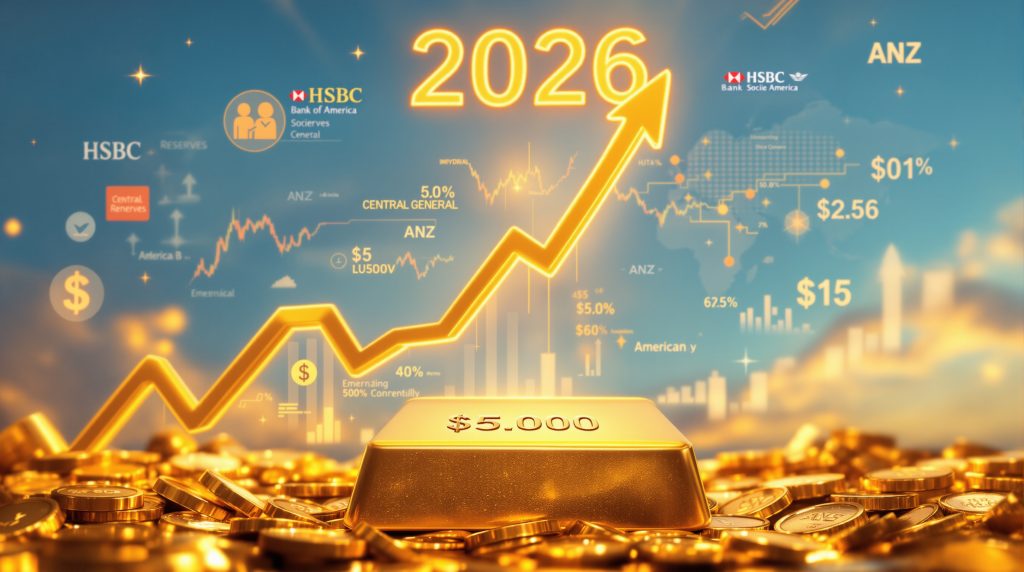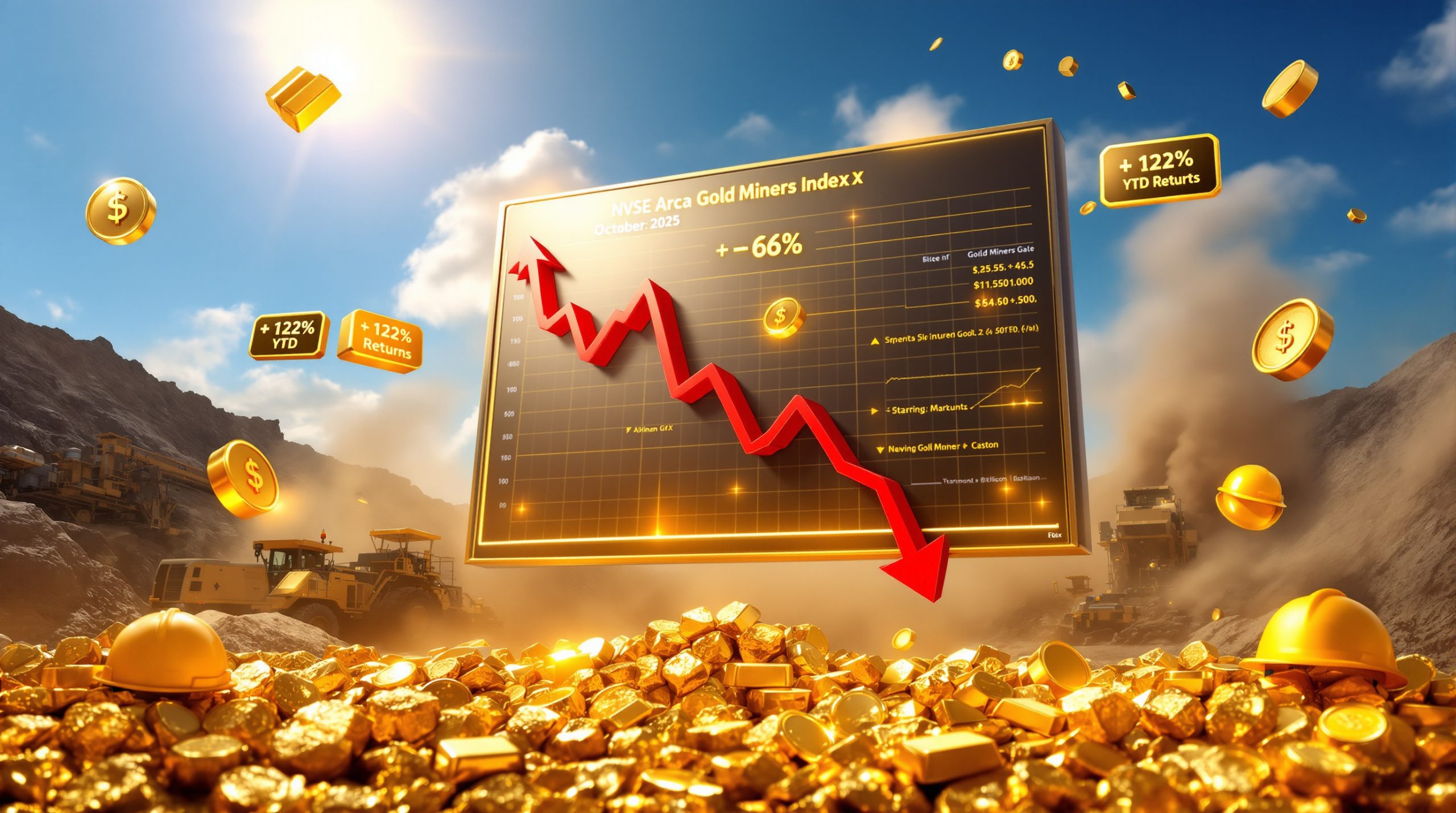What Economic Forces Are Driving Gold's Historic Rally?
The precious metals market has witnessed unprecedented momentum as gold prices surge toward ambitious targets. Multiple major financial institutions now project that gold could reach $5,000 per ounce by 2026, driven by a confluence of economic forces that distinguish this rally from previous cycles. Furthermore, current gold $5000 forecast projections reflect institutional consensus on fundamental market shifts.
Central Bank Purchasing Patterns Reshape Global Demand
Central bank gold acquisitions have reached levels not seen in decades, fundamentally altering supply-demand dynamics. According to the World Gold Council's Q3 2024 report, central banks added 337 tonnes to official gold reserves in Q3 2024 alone, marking the third-highest quarter on record. For the first nine months of 2024, total purchases reached an impressive 694 tonnes.
The scale of institutional buying extends beyond traditional Western central banks. China's People's Bank maintained continuous gold purchases for 18 consecutive months from November 2022 through May 2024, accumulating approximately 316 tonnes during this period. This sustained buying pattern reflects strategic reserve diversification efforts among emerging economies.
Key Central Bank Activity Metrics:
• Poland increased gold reserves by 57 tonnes in 2024, bringing total holdings to 420 tonnes
• Gold now represents approximately 14% of Poland's total reserves
• 29% of central banks intend to increase gold reserves in the next 12 months, the highest percentage recorded in survey history
• Primary motivations include inflation concerns (46% of respondents) and geopolitical instability (42% of respondents)
The dedollarisation trend provides additional context for this institutional demand surge. IMF Currency Composition of Official Foreign Exchange Reserves data shows the US dollar's share of global reserves declined to 58.4% in Q2 2024, down from 71% in 1999. During this same timeframe, gold's share of total reserves increased to approximately 15% globally.
Geopolitical Risk Premium in Modern Markets
Current geopolitical tensions have created sustained uncertainty premiums across asset classes, with gold benefiting as the primary safe-haven destination. The October 2025 rally demonstrates gold's responsiveness to policy uncertainty, particularly regarding trade relationships and international sanctions. Consequently, inflation hedge dynamics have become more pronounced in current markets.
Regional conflicts and trade disputes continue supporting elevated risk premiums. President Donald Trump's trade policies implemented throughout 2025, including various tariff measures, have contributed to market uncertainty that traditionally favours precious metals allocation.
Market Insight: Unlike previous rallies driven primarily by speculation, current institutional buyers appear focused on long-term diversification strategies rather than short-term profit-taking opportunities.
The persistence of these geopolitical factors suggests continued structural support for gold prices. Currency hedging strategies have become increasingly important as traditional reserve currencies face challenges to their dominant positions.
How Do Interest Rate Expectations Support $5,000 Gold Forecasts?
Interest rate policies and expectations form the foundation of institutional gold price projections. The relationship between real interest rates and gold prices remains one of the most reliable predictive indicators in precious metals analysis.
Federal Reserve Policy Trajectory Analysis
The Federal Reserve's Summary of Economic Projections from September 2024 indicated a median projection of 3.4% for the federal funds rate at the end of 2025, down from 4.9% in 2024. This dovish trajectory supports precious metals valuations through reduced opportunity costs for non-yielding assets.
Real interest rates provide the clearest lens for understanding gold's current momentum. With gold trading around $4,250 per ounce as of October 2025 and 10-year Treasury Inflation-Protected Securities yielding approximately 1.7%, real rates remain historically accommodative for precious metals. Moreover, analysis of the all-time highs analysis reveals these conditions may persist.
Historical Context for Real Rates:
• During the 1980s gold bear market, real interest rates averaged above 5%
• Current TIPS yields of 1.7% represent supportive conditions for gold appreciation
• Research indicates 100 basis point declines in real yields typically correlate with 10-15% gold price increases
• Real yields have declined from 2023 peaks above 2% to current levels around 1.7%
Currency Debasement Concerns Fuel Precious Metals Demand
Sovereign debt sustainability concerns have intensified focus on alternative store-of-value assets. Rising public debt levels across major economies create long-term currency debasement risks that favour hard assets like gold.
The expansion of alternative payment systems and bilateral currency arrangements reflects diminishing confidence in traditional reserve currencies. Bank for International Settlements data shows central bank participation in Currency Swap Arrangements increased by 15% from 2022 to 2024, indicating institutional preparation for monetary system evolution.
Dollar Weakness Indicators:
• US dollar share of global reserves at 58.4%, down from 71% in 1999
• Lowest dollar reserve percentage in nearly three decades
• Increasing bilateral trade agreements bypassing dollar settlement
• Expansion of regional payment systems reducing dollar dependency
Which Financial Institutions Are Backing the $5,000 Gold Target?
Multiple prestigious financial institutions have converged on similar gold $5000 forecast targets, lending credibility to these ambitious price projections through diverse analytical approaches. Additionally, Bank of America's recent analysis has strengthened institutional confidence in these projections.
| Institution | 2026 Gold Target | Average 2026 Forecast | Key Reasoning | Timeline |
|---|---|---|---|---|
| HSBC | $5,000/oz | $4,600/oz | Geopolitical risks, new market entrants | H1 2026 |
| Bank of America | $5,000/oz | Not specified | Macroeconomic uncertainty | 2026 |
| Societe Generale | $5,000/oz | Not specified | Structural demand shifts | 2026 |
Consensus Building Among Major Investment Banks
HSBC's analysis represents the most detailed institutional framework supporting gold $5000 forecast scenarios. The bank raised its 2025 average gold price forecast to $3,455 per ounce from $3,355 previously, while increasing its 2026 average forecast to $4,600, up from the previous estimate of $3,950.
The methodology underlying these projections focuses on three primary analytical pillars:
• Geopolitical Risk Assessment: Quantifying uncertainty premiums from regional conflicts and trade disputes
• New Market Participant Analysis: Evaluating the impact and persistence of recently entered institutional buyers
• Macroeconomic Policy Uncertainty: Measuring the effects of monetary and fiscal policy coordination challenges
HSBC explicitly noted that sharp price increases during the second half of 2025 and heightened risks from new market entrants support their bullish outlook. However, they also anticipate significant volatility and price moderation in the second half of 2026, suggesting the $5,000 target may represent a peak rather than sustained level. Furthermore, experts predict gold prices could reach US$5,000 as the precious metal rally continues.
Bank of America's research emphasises macroeconomic uncertainty as the primary driver, while Societe Generale focuses on structural demand shifts in the precious metals market. This methodological diversity strengthens confidence in the general price trajectory, even as specific timing and peak levels may vary.
What Role Do New Market Participants Play in Gold's Bull Run?
The current gold rally distinguishes itself through the participation of previously absent market segments, creating demand patterns that may prove more durable than historical precedents. In addition, understanding gold market trends helps explain this phenomenon.
Exchange-Traded Fund Inflow Acceleration
Global gold ETFs experienced a dramatic reversal in Q3 2024, recording net inflows of 94 tonnes after seven consecutive quarters of outflows. This shift indicates renewed institutional confidence in gold's strategic value proposition.
Regional ETF Flow Breakdown:
• North American funds led with inflows of 55 tonnes
• Asian funds contributed 23 tonnes in new investment
• Total global gold ETF holdings reached 3,143 tonnes as of September 30, 2024
• Digital gold platforms in India showed 35% year-over-year growth in 2023-2024
The acceleration of ETF inflows reflects broader institutional adoption trends. Unlike previous cycles dominated by speculative positioning, current inflows appear driven by strategic asset allocation decisions aimed at portfolio diversification and risk management.
Emerging Market Investment Strategies
Asian markets have emerged as significant demand drivers, with retail investment patterns showing remarkable resilience. Digital gold platforms have democratised precious metals access, enabling smaller investors to participate in ways previously unavailable.
Cultural affinity factors in key Asian markets support long-term holding patterns that differ from Western speculative behaviour. This behavioural difference creates more stable demand foundations that may persist even during price volatility periods.
Cryptocurrency Correlation Insights:
• During market stress periods (Q4 2023 – Q1 2024), gold-Bitcoin correlation increased to 0.35
• Normal market conditions show near-zero correlation between gold and Bitcoin
• Some investors view both assets as alternative stores of value during uncertainty
• This correlation suggests complementary rather than competitive positioning
How Might Market Volatility Impact the $5,000 Trajectory?
Volatility expectations form a critical component of institutional gold $5000 forecast models, with historical precedents providing context for potential price path scenarios. However, the market price surge continues despite volatility concerns.
Price Correction Scenarios and Timing Considerations
The current rally's pace has drawn comparisons to December 2008, when gold posted its strongest weekly gains during financial crisis peak uncertainty. Gold is currently tracking toward its strongest weekly performance since that benchmark period, suggesting comparable stress levels in current markets.
HSBC's analysis explicitly acknowledges volatility risks, expecting significant price swings and potential moderation during the second half of 2026. This timing suggests institutional profit-taking pressures may emerge as prices approach $5,000 targets.
Historical Volatility Patterns:
• 2008-2011 bull market featured average intra-year swings of 23%
• Gold peaked at $1,921/oz in September 2011
• Subsequent correction reached approximately 30% over two years
• December 2008 weekly gain: 11.5% during financial crisis peak
• Current weekly gains approach similar magnitude, indicating comparable stress
Technical Analysis Supporting Long-Term Bullish Outlook
Chart pattern analysis reveals sustained momentum indicators supporting continued upward price pressure through early 2026. The breach of $4,300 levels in October 2025 established new technical support zones that provide foundation for further advances.
Momentum indicators suggest the current rally maintains healthy characteristics rather than speculative excess. Unlike purely sentiment-driven advances, fundamental demand drivers provide technical support for sustained price appreciation.
Critical Distinction: HSBC noted that unlike previous rallies, many new buyers are likely to remain in gold for diversification and safe-haven qualities rather than purely speculative gains, creating a more stable demand foundation.
What Economic Scenarios Could Accelerate Gold to $5,000?
Several macroeconomic scenarios could provide additional acceleration toward gold $5000 forecast targets, each representing plausible developments within current policy and market frameworks.
Stagflation Risk Assessment and Historical Parallels
Current economic indicators show concerning similarities to stagflation precursor conditions. U.S. Bureau of Economic Analysis data indicates Q2 2024 real GDP growth of 2.8% (annualised), while the Personal Consumption Expenditures Price Index remained at 2.5% year-over-year as of September 2024.
While not stagflation by classical definitions, the persistence of inflation above the Federal Reserve's 2% target despite growth concerns has raised institutional awareness of historical parallels.
1970s Stagflation Impact on Gold:
• Gold prices increased from $65/oz to $850/oz (1973-1980)
• Total appreciation: 1,207% during stagflation period
• Inflation averaged 8.8% annually during this period
• Unemployment rose from 4.9% to 7.1% simultaneously
Current conditions exhibit similar underlying tensions between growth expectations and inflation persistence, though at more moderate levels than 1970s extremes.
Dollar Reserve Status Challenges
Alternative reserve currency development represents a structural long-term factor supporting precious metals demand. The expansion of bilateral payment systems and regional currency arrangements indicates institutional preparation for monetary system evolution.
BRICS nations have accelerated development of alternative payment mechanisms that reduce dollar dependency. While immediate impacts remain limited, the trajectory suggests continued pressure on traditional reserve currency dominance over investment horizons relevant to gold $5000 forecast scenarios.
Reserve System Evolution Indicators:
• Dollar reserve share declining to 58.4%, lowest in three decades
• Bilateral currency swap agreements expanding rapidly
• Regional payment systems gaining institutional adoption
• Central bank gold purchases reaching multi-decade highs
How Should Investors Position for the Potential $5,000 Gold Move?
Strategic positioning for gold $5000 forecast scenarios requires careful consideration of various investment vehicles, portfolio allocation principles, and risk management approaches.
Portfolio Allocation Strategies for Precious Metals
World Gold Council research conducted in 2024 found that portfolios with 5-10% gold allocation showed improved risk-adjusted returns over a 20-year backtest period. The optimal allocation for risk reduction was approximately 8% for traditional 60/40 stock/bond portfolios.
Gold Correlation Benefits:
• Gold-S&P 500 correlation: approximately 0.05 (near-zero over 5 years)
• Gold-Bond correlation: approximately 0.10 (Bloomberg Barclays Aggregate)
• Diversification benefits remain consistent across market cycles
• Risk reduction optimal at 8% allocation level
These correlation patterns demonstrate gold's effectiveness as a portfolio diversifier, particularly relevant during periods when traditional asset correlations increase during market stress.
Investment Vehicle Comparison for Gold Exposure
Different investment approaches offer varying exposure characteristics, costs, and risk profiles for investors seeking gold $5000 forecast participation.
| Investment Type | Cost Structure | Leverage Factor | Storage Requirements | Liquidity |
|---|---|---|---|---|
| Physical Gold | 3-7% premium over spot | 1x | Secure storage needed | Moderate |
| Gold ETFs | 0.25-0.40% annual expense | 1x | None | High |
| Mining Stocks | Trading commissions | 2-3x typical | None | High |
| Futures Contracts | Margin requirements | High leverage | None | High |
Physical Gold Considerations:
• Premiums for 1-oz coins range 3-7% above spot price
• Storage and insurance costs add ongoing expenses
• Direct ownership provides maximum security
• Lower liquidity compared to financial instruments
Gold ETF Analysis:
• Major ETFs (GLD, IAU) charge 0.25-0.40% annually
• High liquidity during market hours
• No storage requirements or insurance needs
• Tracking accuracy generally excellent
Mining stocks historically provide 2-3x leverage to gold price movements but carry company-specific operational risks that may not align with precious metals fundamentals.
What Are the Potential Risks to the $5,000 Gold Forecast?
While institutional consensus supports ambitious gold $5000 forecast targets, several scenarios could derail or delay this price trajectory.
Scenarios That Could Derail the Bull Market
Unexpected economic strength could reduce safe-haven demand that currently supports elevated gold prices. Robust GDP growth combined with declining inflation might shift institutional preferences toward yield-generating assets.
Aggressive Federal Reserve tightening represents another significant risk factor. If real interest rates rise substantially above current 1.7% levels, opportunity costs for holding non-yielding gold could pressure institutional allocation decisions.
Historical Correction Context:
• Gold's 2011 peak at $1,921/oz was followed by 45% correction
• Correction period lasted 4 years before establishing new uptrend
• Real interest rate increases were primary catalyst for decline
• Current correction risks appear lower given policy trajectory
Market Timing Uncertainties and Volatility Expectations
HSBC's forecast explicitly anticipates significant volatility and price moderation during the second half of 2026, suggesting $5,000 targets may represent peaks rather than sustained levels.
Institutional profit-taking pressures typically emerge at key psychological levels. The $5,000 target represents a significant round number that could trigger coordinated selling from momentum-based strategies.
Volatility Risk Factors:
• New market participants may exhibit different selling patterns
• Seasonal trading patterns could affect timing
• Liquidity conditions during stress periods remain uncertain
• Technical resistance levels may trigger profit-taking
Technological disruption in store-of-value preferences represents a longer-term structural risk. While currently limited, continued evolution of digital assets could eventually compete with gold's traditional monetary functions.
Evaluating the Probability of $5,000 Gold
Synthesising Multiple Forecast Methodologies
The convergence of multiple prestigious institutions on gold $5000 forecast targets provides significant credibility to these ambitious projections. HSBC, Bank of America, and Societe Generale have reached similar conclusions through different analytical approaches, suggesting robust fundamental support.
Fundamental Analysis Convergence:
• Central bank buying at multi-decade highs
• Geopolitical risk premiums supporting safe-haven demand
• Real interest rates remaining supportive for precious metals
• Currency debasement concerns driving institutional diversification
Technical indicators align with fundamental analysis, showing sustained momentum without speculative excess characteristics. The breach of $4,300 levels establishes new support zones that provide foundation for continued advances.
However, timing uncertainties remain significant. HSBC's expectation of volatility and moderation in H2 2026 suggests the $5,000 target may represent a peak requiring precise timing for optimal investment outcomes.
The probability of reaching $5,000 appears high based on institutional consensus and fundamental drivers. The sustainability of such levels depends largely on whether new market participants maintain positions during inevitable volatility periods, distinguishing this cycle from previous speculation-driven rallies.
Risk-Reward Assessment:
• Current price around $4,250 suggests 17% upside to $5,000 target
• Historical volatility patterns indicate significant correction risks
• Diversification benefits support strategic allocation regardless of peak timing
• Multiple institutional forecasts reduce single-analyst dependency risk
Disclaimer: Gold price forecasts involve significant uncertainty and risk. Past performance does not guarantee future results. Investors should carefully consider their risk tolerance and consult qualified financial advisors before making investment decisions. The analysis presented here is for informational purposes only and should not be considered personalised investment advice.
Looking to Capitalise on Gold's Historic Rally?
Discovery Alert's proprietary Discovery IQ model delivers real-time alerts on significant ASX mineral discoveries, empowering subscribers to identify actionable opportunities in gold and precious metals exploration companies ahead of the broader market. Begin your 30-day free trial today and position yourself to benefit from the continuing precious metals momentum that's driving institutional forecasts toward $5,000 gold.




